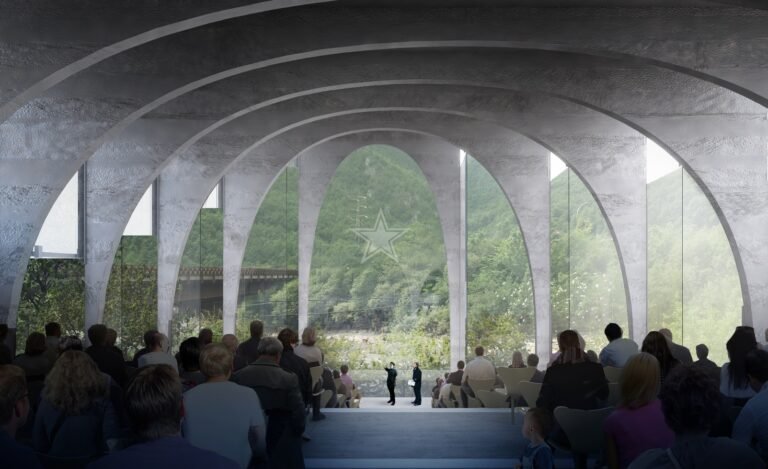New projects demonstrate how designers in California respond to increased fire risks
After the 2019 fire season, CityLab reporter Laura Bliss surfaced an old quip about California: “Living on land that so readily burns, shakes, and slides was the state’s original sin,” and one day it will teach us a lesson. Given the increased dangers of a growing state plus climate change, it can seem as if the learning has begun. Still, over 39 million Californians call the state home, so the story necessarily pivots from “Should we live here?” to “How should we live here?”
Wildfires are a natural and necessary part of a healthy ecosystem, as they clear out dead, nutrient-depleting material, kill diseases, and facilitate germination for many of California’s native species. Their occurrence is heavily influenced by both short-term hourly and seasonal weather patterns and the climate’s longer variations. Recent and projected global warming– driven increases in atmospheric aridity are exacerbating fire-friendly conditions.
In 2018, more than 2.7 million people lived in “very high” fire hazard areas, according to California’s Department of Forestry and Fire Protection. The rating is determined by the amount of fuel produced by the local ecosystem and the probability of ignition due to local human and climate conditions. Over the past 70 years, wildfire suppression has significantly increased fuel and, in turn, the likelihood of severe fire.
Many of California’s foothills fall into the category of wildland-urban-interface (WUI), where housing meets undeveloped wildlands; fire risk in these areas is steadily increasing. Today’s fires will likely seem relatively mild in the decades to come. Record-breaking wildfires have disastrous effects on human communities, so the question sharpens to something more specific: how to coexist with fire. Four case studies demonstrate our latest answers.
Frame House, Mork-Ulnes Architects
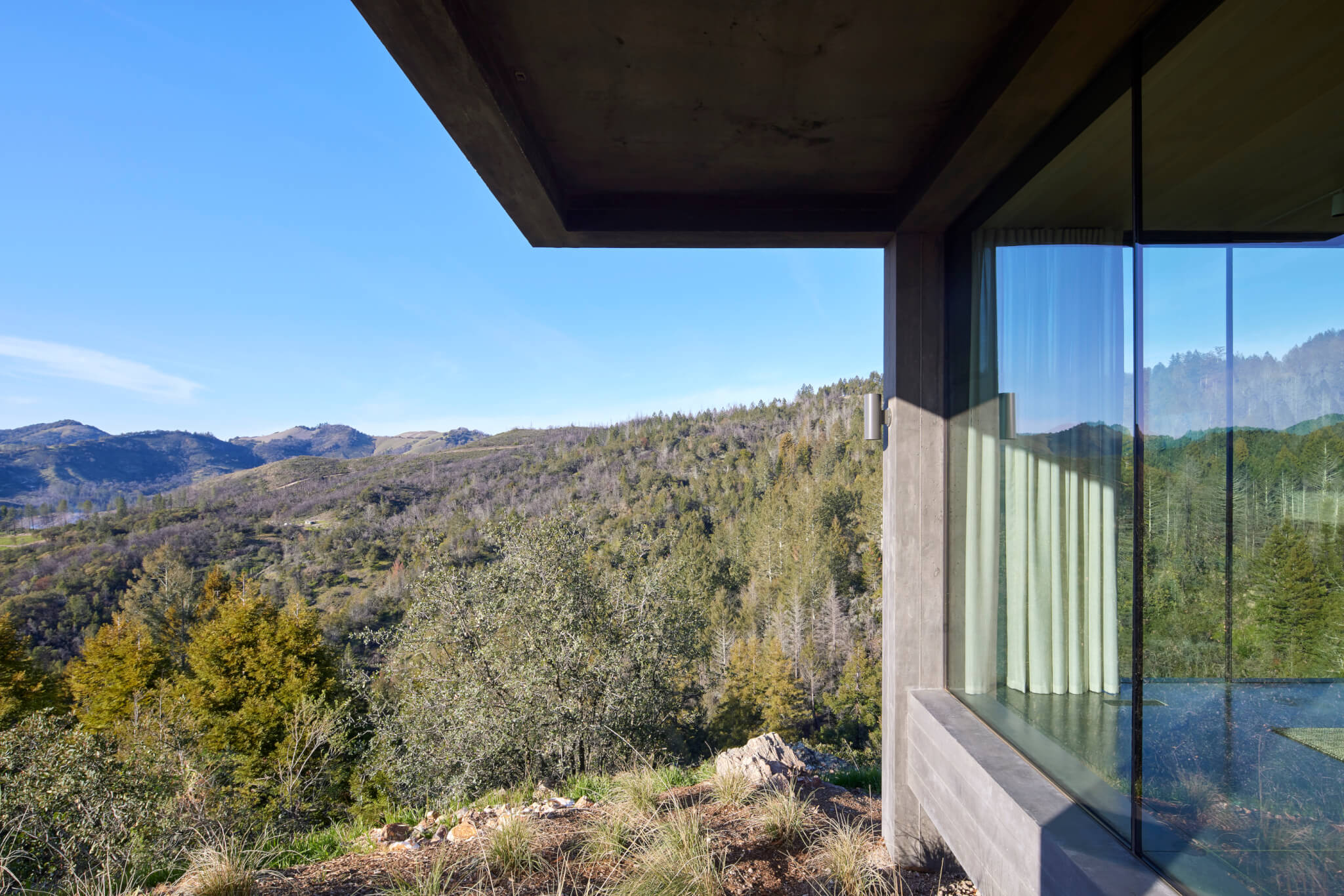
In 2017, Mork-Ulnes Architects (MUA) completed a cast-in-place concrete guest house next to a wood-framed home in the foothills outside Sonoma. In October of that year, a major fire blew through the area, damaging the main house but leaving the Ridge House virtually unscathed: The chemically inert concrete resisted heat transfer, but the older home’s wood-frame construction was damaged beyond repair.
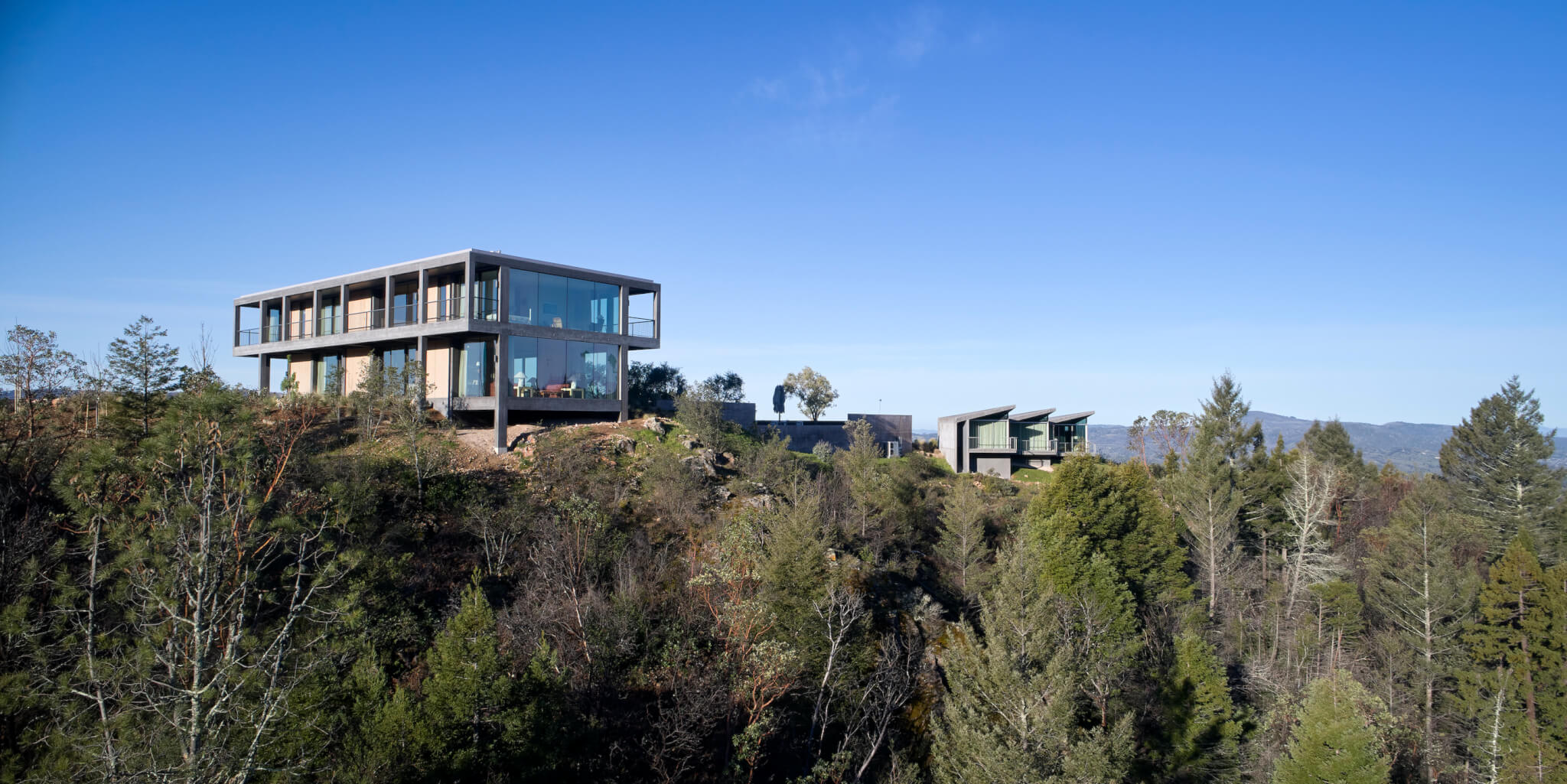
When MUA was commissioned to rebuild the main house, concrete was the logical choice. The client liked wood but wasn’t ready for CLT. (Neither was California’s building code at the time.) The concrete-glass-and-CMU structure is more economical and airier than its predecessor, and the concrete frame will likely endure for decades, if not centuries.
Casper Mork-Ulnes, who operates the practice from offices in Oslo, Norway, and San Francisco, hopes that the structure will be there in 200, 500, or even 1,000 years, “like an Italian fortress.” That longevity is a benefit, particularly when you’re building in fire country. “We won’t have to replace that house four times in the next 200 years, or even two times in the next 50 years,” he said.
Analog House, Olson Kundig
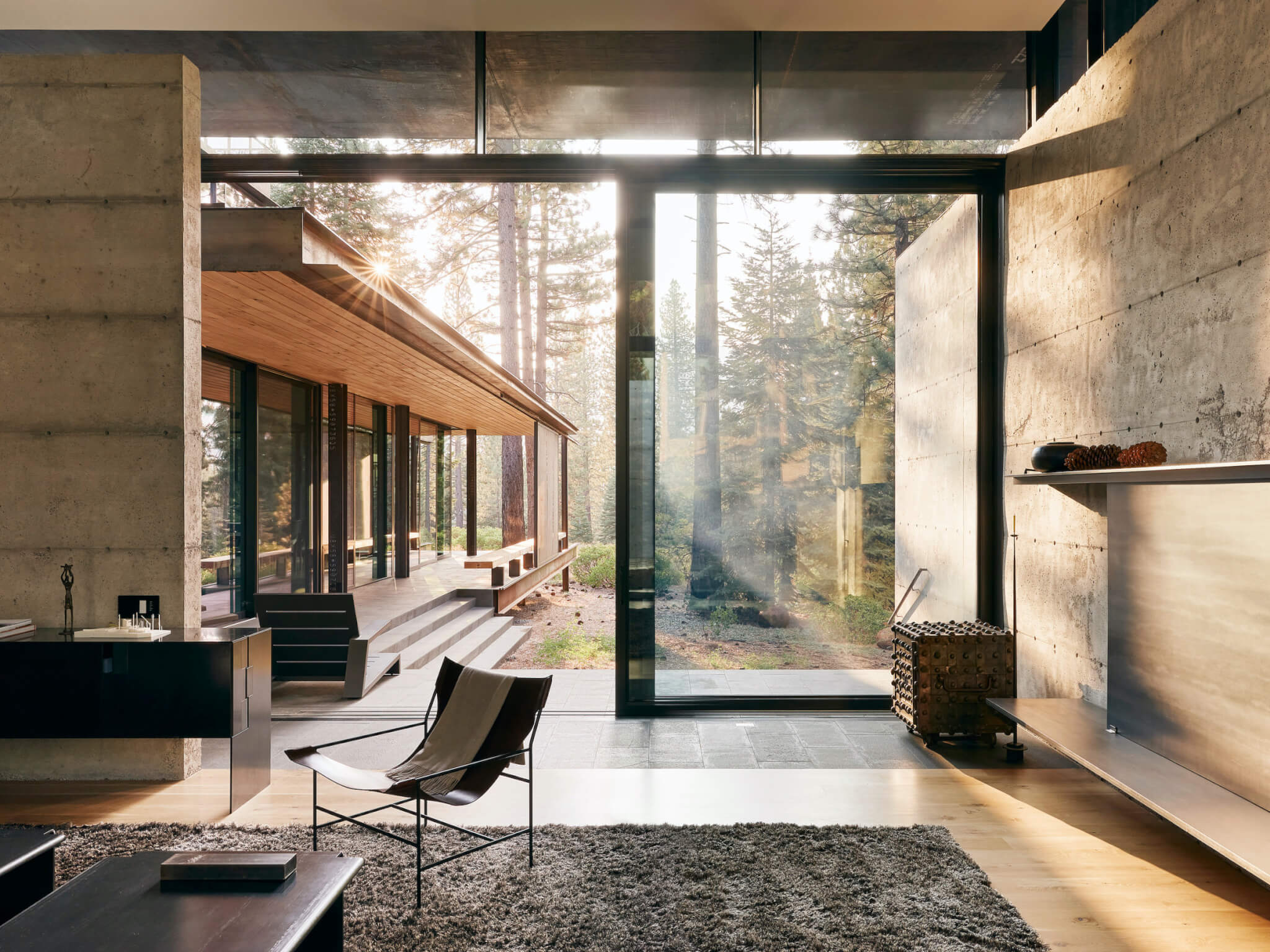
In a former logging region of the Sierra Nevada near Lake Tahoe, Olson Kundig designed a home for Greg and Lesa Faulkner on the front lines of wildfire, so fire resistance was an important performance consideration. (Greg leads Faulkner Architects, with offices in Truckee and Berkeley.) The home is grounded by concrete walls that were built with 8-inch inner and outer layers; the interior gap is filled with closed-cell insulation. Outside, the exterior wood soffits are backed by one-hour-rated gypsum assemblies, and the exterior decks are sheathed in basalt stone tile. Above, the roof deck is made of heavy timber, and the roof beyond is protected by crushed basalt aggregate. The wood-framed walls are sheathed in 10-gauge weathering steel. To mitigate heat gain, the steel is furred off the wall, and the gap is filled with rock wool insulation. According to the architects, when acquiring a new fire insurance policy, the house received a 10/10 rating for fire preparedness, despite being sheltered amid a tall pine forest.
Ojai Valley School, Frederick Fisher and Partners
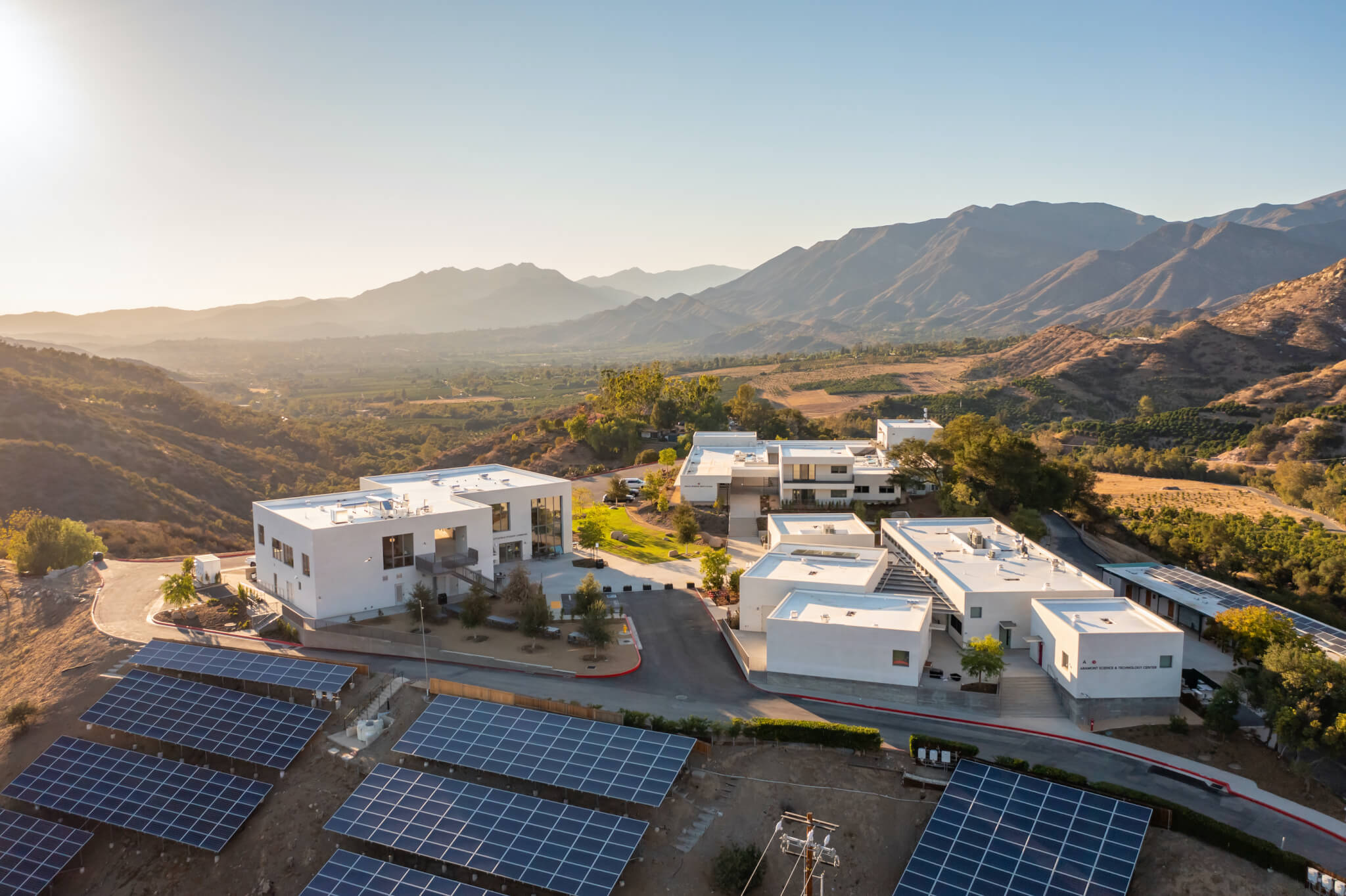
All new buildings in fire-prone areas of California must meet strict building codes and insurance rating requirements that include Class A roof coverings, multipaned or tempered glass windows, screened soffit and attic vents, noncombustible siding, and fire-rated decking. These requirements reduce the likelihood of a structure catching fire. Other commonsense strategies include avoiding deep eaves and wood-framed attics, as well as eliminating areas where wind-borne embers can grow into flames.
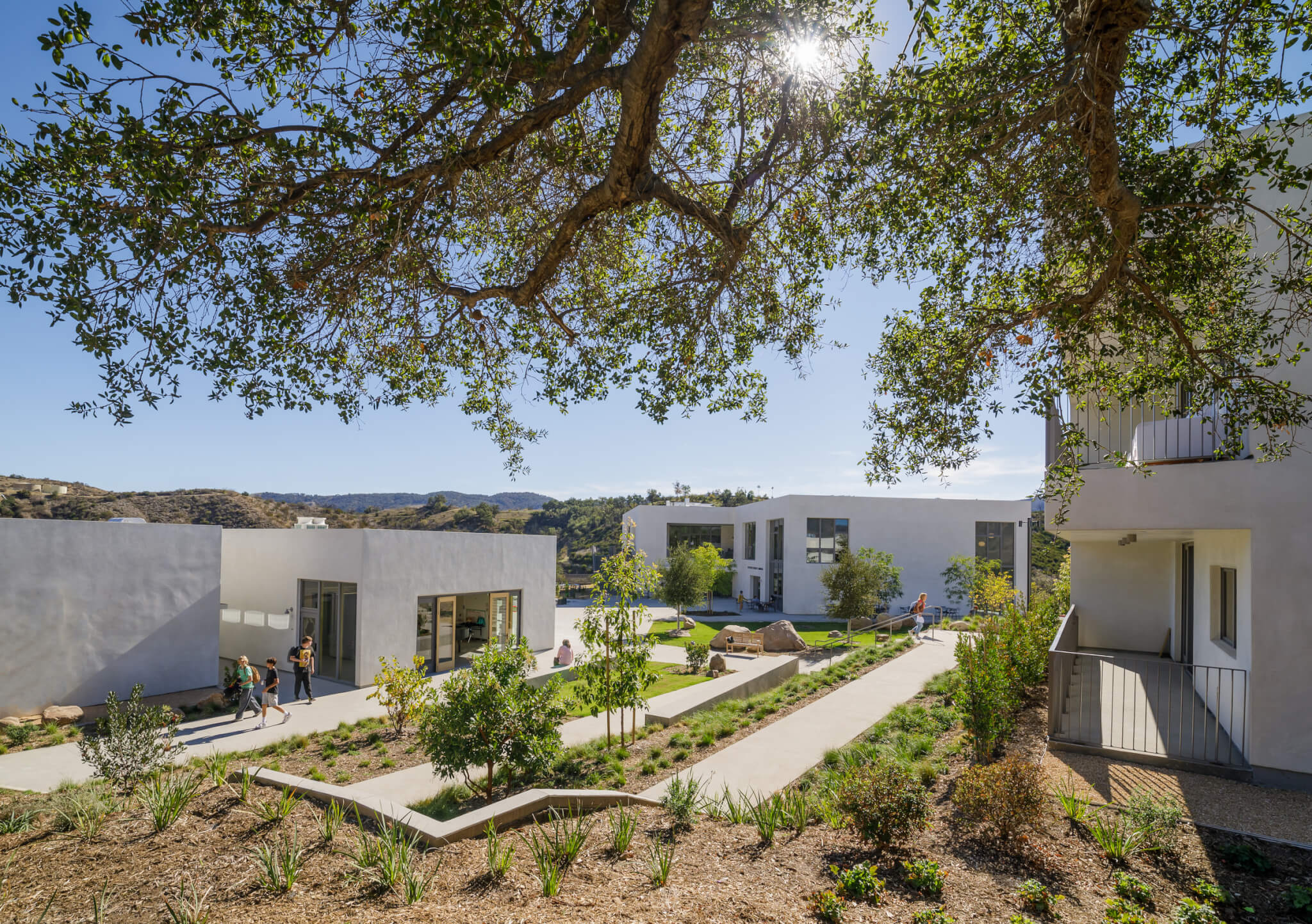
After a 2017 fire destroyed a boarding school campus in Ojai, a small city in the mountains northwest of Los Angeles, Frederick Fisher and Partners redesigned the campus with these lessons in mind—less combustible, more accessible. The new buildings have no overhangs, no eaves, and no ornament. It seems that “minimalistic, beautiful design is good for preventing fire,” Takashige Ikawa, a partner in the office, said.
The buildings are clustered around a courtyard with easy fire truck access. They occupy a hilltop site that has been sliced and leveled, resulting in 360-degree views. Arriving at the campus requires a 15-minute drive up a single-lane road, so the route was reworked and widened for emergency vehicle access, which is key, Ikawa said. The architects included photovoltaics and robust battery storage to run water pumps and operate the campus when the electrical grid goes down. This infrastructure is expensive but necessary. “Making architecture is expensive,” Ikawa stated. “Our approach is, Without spending too much extra money on special things, how can we design with the budget in mind and still be efficient for fire?”
Esencia, SWA
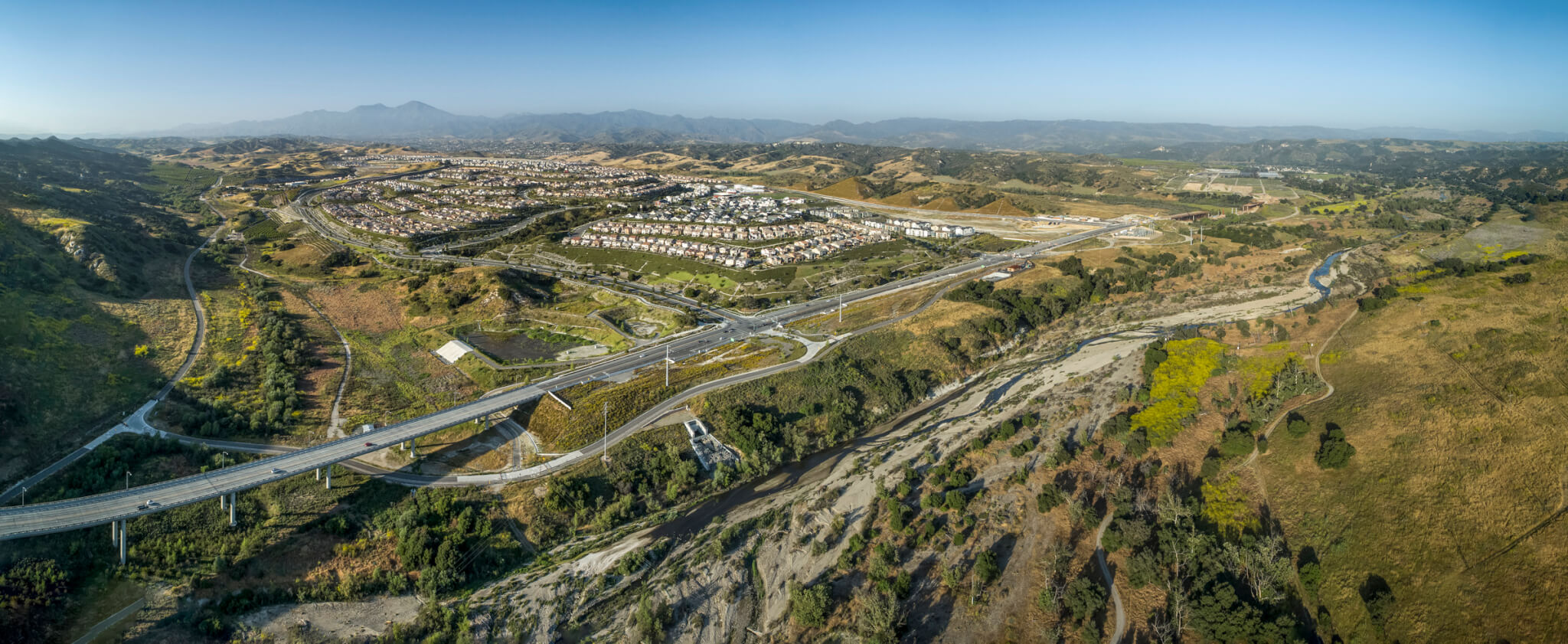
The WUI is a socioeconomically diverse space: Luxury homes are sited next to commuter subdivisions and low-income rural mountain towns that remain invisibly tethered to major metropolitan areas. Some people can absorb the economic loss of a major wildfire event, but most cannot. A sustainable path forward requires an economical and ethical strategy for mitigating risk.
In the foothills between Los Angeles and San Diego, Esencia, an 800-acre master-planned residential community with 2,740 homes, has a robust landscape infrastructure strategy with a maintenance fee shared by the residents. Designed by SWA, Esencia is one of a series of planned buffered communities (14,000 units) set amid the working ranch of Rancho Mission Viejo. Realized with wildfire in mind, it is surrounded by irrigated orchards and maintained landscapes that separate the community from wildlands. “The fire mitigation zone is a specific, strict thing that encircles the community. [It requires] either a 110-foot or 170-foot buffer, depending upon the risk of fire,” Andrew Watkins, principal at SWA, shared. This approach, along with water reclamation strategies and road infrastructure, creates a safe zone amid an otherwise hostile landscape.
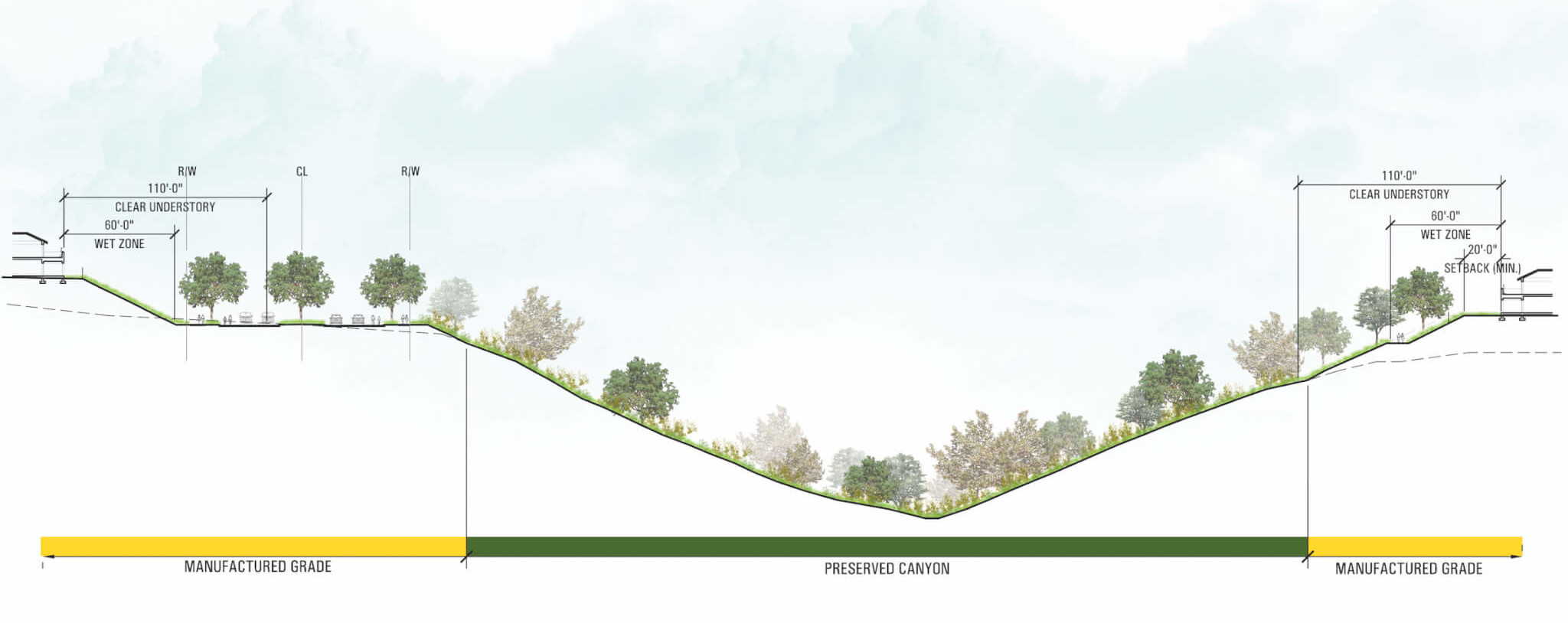
Esencia is one of the first master-planned communities to receive the Firewise USA designation, a program administered by the National Fire Protection Association and cosponsored by the USDA Forest Service and the National Association of State Foresters. (The program educates communities about wildfire preparedness and acknowledges proactive efforts at reducing wildfire risk.) Firewise recognized Esencia for integrating multifaceted, science-based fire protection planning—including fire behavior modeling, home construction, community design, and landscape materials and maintenance—into all levels of decision making. Clustering communities and facilitating a collective investment in landscape maintenance enable the residents of Esencia to coexist with fire.
Looking Ahead
The coming decades will require a nuanced and complex approach that relies on the interdependence between urban, suburban, and rural concerns. California has been in an acute housing crisis since the 1970s. According to research by Dr. Sarah Mawhorter at UC Berkeley’s Terner Center for Housing Innovation, from 2007 to 2017, California had a production shortfall of 1.1 million units. For the past half century, a hesitation to exceed prior strategies has left a deficit of design interventions that adequately address 21st-century problems. While serious restrictions should continue to control where development can take place, “there still need to be thoughtful development and a decent amount of density,” Watkins, from SWA, said.
These interventions require interdisciplinary responses. The exciting thing about a crisis is that when one system stops working, another one—more adaptable and ethical—can emerge. Catching up with climate change requires us to work holistically to create new forms of communities, labor, power, and risk.
Examples of this can be found throughout the state. In Lake County, Greenville, a town of 1,000, is rebuilding after the 2021 Dixie fire using mass-timber panels milled from ponderosa pine harvested with fire-mitigating forest thinning practices.
The synergy matches construction needs with fire awareness, Tyler Pew of the Dixie Fire Collaborative said. It’s “an approach to construction with mass timber that reduces construction, labor, and increases fire resilience.”
In Southern California, Greg Kochanowski, a landscape architect who leads The Wild, a research lab, is exploring parametric insurance models. Such a tool could distribute funds based on climate milestones, releasing money to communities to be invested in mitigation strategies prior to catastrophic events. “The climate is changing rapidly, and we humans don’t have the ability to actually move that fast,” Kochanowski said. “We need to find systems of working that can be much more nimble.”
Slowly California is exiting a state of organized irresponsibility and working toward a future of coexisting with wildfires. Architecture in the era of climate change is poised to challenge the way we live and the patterns we inhabit while creating the foundations for a society to come.
Vivian Schwab is a facilitator, designer, and housing justice advocate born, raised, and still living in San Francisco.


